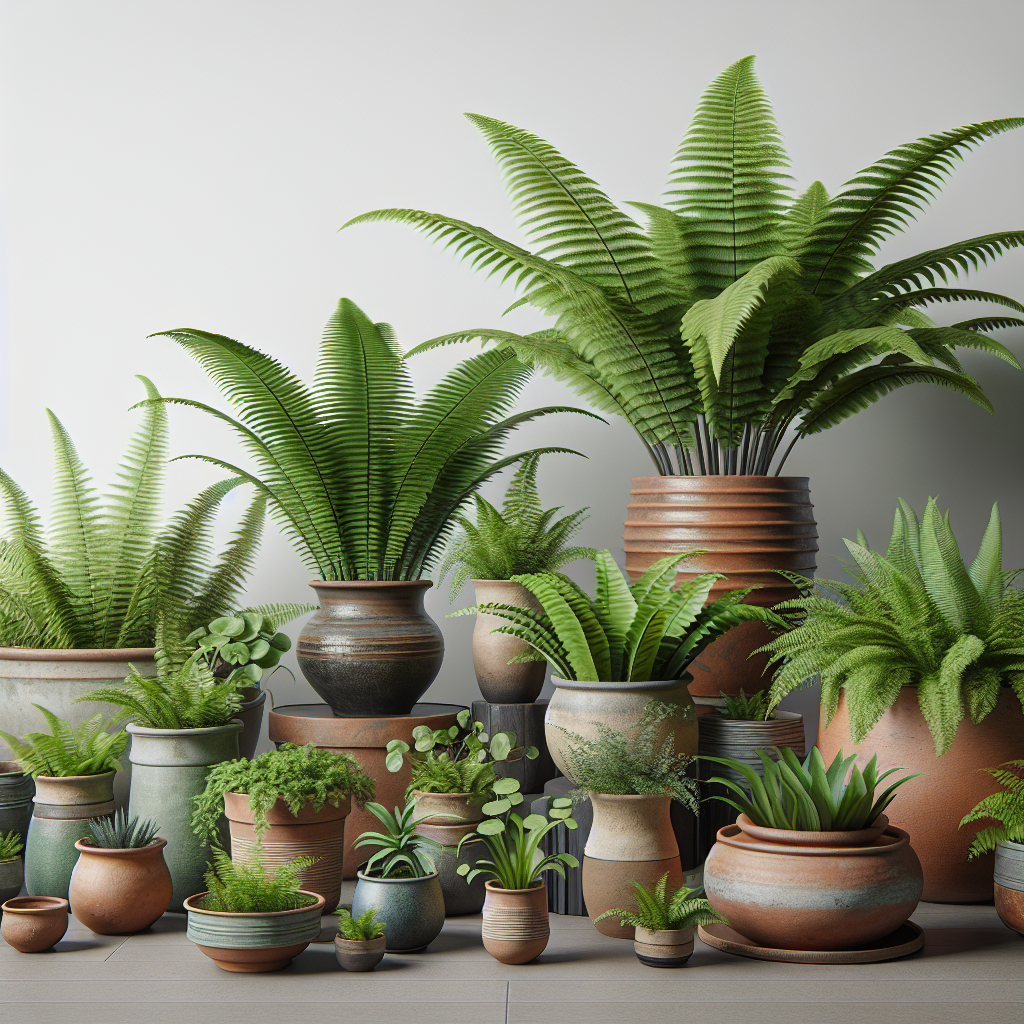Ferns are popular plants known for their lush green foliage and delicate fronds that add a touch of elegance to any indoor or outdoor space. One key factor in helping ferns thrive is choosing the right pot for them. The right pot can make a significant difference in the health and growth of your ferns, so it’s important to consider a few key factors when selecting one.
When it comes to choosing the right pot for your ferns, there are several factors to keep in mind, such as size, material, drainage, and aesthetics. Understanding how these factors impact your fern’s well-being can help you make an informed decision that will benefit both you and your plant in the long run. In this article, we will explore each of these factors in detail to help you choose the perfect pot for your beloved ferns.
**Size Matters:**
One of the most crucial aspects of selecting a pot for your fern is getting the size right. The size of the pot will directly impact the growth and health of your plant. If the pot is too small, it can restrict root growth and lead to root-bound conditions. On the other hand, if the pot is too large, it can hold excess moisture around the roots and cause waterlogging, which can lead to root rot.
When choosing a pot size for your fern, consider the current size of your plant and its growth habits. A good rule of thumb is to select a pot that is 1-2 inches larger in diameter than the current root ball of your fern. This will provide enough room for root expansion without overwhelming the plant. Additionally, make sure the pot has enough depth to accommodate the length of your fern’s roots.
**Material Matters:**
The material of the pot can also have a significant impact on your fern’s health. There are several options to choose from, including terracotta, plastic, ceramic, and metal pots. Each material has its pros and cons when it comes to growing ferns.
Terracotta pots are popular due to their porous nature, which allows air circulation around the roots and prevents waterlogging. However, they tend to dry out quickly and may require more frequent watering. Plastic pots are lightweight and retain moisture well but may not provide adequate airflow for roots.
Ceramic pots are stylish and come in various designs but may not be as breathable as terracotta pots. Metal pots are durable but can heat up quickly in direct sunlight, which may harm sensitive ferns. Ultimately, choose a material that suits your lifestyle and growing environment while providing proper drainage for your fern.
**Drainage Matters:**
Proper drainage is essential for healthy ferns as they dislike sitting in soggy soil for extended periods. When selecting a pot for your ferns, ensure it has drainage holes at the bottom to allow excess water to escape freely. Without adequate drainage, water will collect at the bottom of the pot and create a waterlogged environment that can lead to root rot.
If you fall in love with a decorative pot that doesn’t have drainage holes or want to use a cache-pot as an outer layer for aesthetic purposes; consider using a nursery pot with drainage holes inside it before placing them into decorative containers without drainage holes.
**Aesthetics Matter:**
While functionality should be at the forefront when choosing a pot for your ferns; aesthetics also play a role since they contribute significantly towards enhancing overall appeal especially if displayed indoors or on patios/decks/balconies where aesthetics matter too! Consider matching or contrasting pots based on interior/exterior style & color schemes; or go bold with unique designs & textures that complement foliage tones & patterns; all while being mindful about still providing necessary growing conditions too!
By considering all these factors – size; material; drainage; aesthetics – when choosing a pot for your ferns; you’ll be setting yourself up with optimal conditions conducive towards successful growth & vibrant health regardless if grown indoors or outdoors – while ensuring long-term sustainability too!
**FAQ:**
1) How often should I repot my fern?
Answer: Fern plants typically need repotting every 1-2 years depending on their growth rate & development needs – watch out signs such as crowded roots pushing up against sides/bottom/outside drainage holes; slow growth rate despite regular feeding/conditions checks etc.; unhealthy leaves raising concerns over possible root-bound issues!
2) Can I use any type of soil mix when repotting my fern?
Answer: Fern plants prefer well-draining soil mixes rich in organic matter like peat moss/vermiculite/perlite mixed together with regular houseplant/compost/garden mix – Avoid heavy clay-based soils or pure sand/gravel types as they impede root development & hinder normal growth patterns!
3) Should I fertilize my fern after repotting?
Answer: Once repotting is done successfully – wait at least 4-6 weeks before applying any fertilizer since fresh transplant needs time adapting new environments/stressors involved during transition period – after this initial settling period follow manufacturer instructions regarding fertilizing schedules/types & concentrations recommended specifically suited towards optimal health/recovery rates post-repotting phase!
4) Why do my potted outdoor patio/balcony decked-out display plants remain stressed despite best care efforts?
Answer: Outdoor potted plants especially those confined within limited containers lack natural insulation/protection often provided by ground-planted counterparts exposed intense weather fluctuations/harsh light/wind forces affecting overall well-being drastically – consider relocating/moving/sheltering such potted plants under covered areas/shade spots during peak hours adjusting watering schedules according climate-specific demands required maintaining consistent growth rates without compromising plant vigor!













